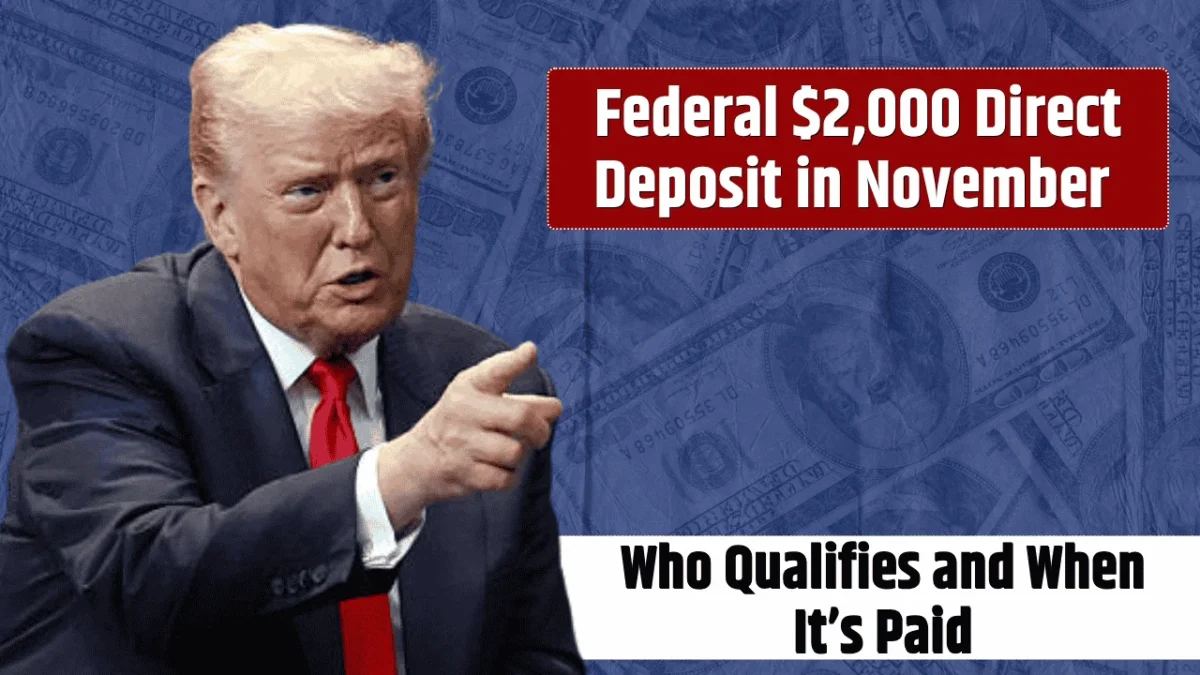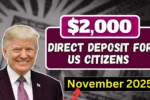Federal $2,000 Deposit Coming: Amid rising living costs for millions of Americans, federal relief programs remain an essential source of stability for many families. A highly anticipated update is the federal $2,000 deposit, which is expected to be issued by November 2025. Although not classified as a traditional stimulus check, it is part of a broader relief effort designed to assist eligible citizens facing high housing, food, and healthcare expenses.
If you’re wondering who’s eligible, how you’ll receive your payment, or what steps you need to take to avoid delays, this guide breaks it all down in a simple and human-friendly way.
What is the federal $2,000 deposit?
The $2,000 deposit is a one-time relief payment designed to help low- and middle-income Americans cope with ongoing financial pressures. The IRS will monitor distribution using information from previously filed tax returns and the federal benefits database.
For many families, this relief is intended to provide temporary assistance for essentials, such as:
- Rent or mortgage payments
- Groceries and household needs
- Medical bills and insurance costs
- School and childcare expenses
- Utility bills and transportation
The exact amount each person receives may depend on their income level and filing status, but $2,000 is the maximum full payment that can be expected.
Eligibility Requirements
The government uses IRS and federal agency data to determine who is eligible. The general criteria are as follows:
1. U.S. Citizenship or Legal Residence
Only U.S. citizens, permanent residents, or qualified resident aliens can receive the deposit.
2. Income Limits
Eligibility is based on your 2024 federal tax return. The expected general income limits are:
- $75,000 or less for single taxpayers
- $150,000 or less for married couples filing jointly
- $112,500 or less for heads of household
Those with income above these limits may receive a reduced payment or no payment at all.
3. 2024 Tax Return Filed
Your 2024 return must be filed and processed so the IRS can verify your income, dependents, and bank details.
4. Direct Deposit Information
Your banking information must be up-to-date. If the IRS is unable to deposit your funds, you may be transferred to a paper check – which could result in delays.
5. Not Claimed as a Dependent
Adults claimed as dependents on another person’s tax return are generally not eligible for this payment.
Billy Bob Thornton, Sam Elliott on Taylor Sheridan Leaving Paramount and the Future of ‘Landman’
Expected Payment Timeline
Although the IRS hasn’t released an exact timetable, federal payments are expected to arrive sometime in November 2025. Based on previous cycles, payments are typically made in phases:
Phase 1: Early November 2025
Direct deposits for individuals with verified bank information.
Phase 2: Mid-November 2025
Deposits for those whose records require updates or minor verification.
Phase 3: Late November to Mid-December 2025
Paper checks or debit cards for Americans without access to direct deposit.
How to Ensure You Receive Your Payment
To avoid delayed or missed deposits, beneficiaries are encouraged to complete the following steps:
1. Log into your IRS online account
Verify your direct deposit details, mailing address, and filing status.
2. File or amend your 2024 tax return
If you haven’t filed yet, submitting your return as soon as possible increases your chances of receiving your November payment.
3. Respond promptly to IRS notices
The IRS may request identity verification or additional information. A prompt response helps avoid payment withholding.
4. Track Your Payment
If activated, the IRS’s “Check Payment Status” tool will allow you to see where your deposit is.
What happens if your payment doesn’t arrive?
If you don’t receive your deposit by December 2025:
- Contact the IRS to trace the payment
- Check if your bank rejected the deposit
- Ensure your 2024 return was processed correctly
- Look for an IRS alert or identity verification letter
In some cases, missed payments can be claimed when filing your 2025 tax return under the Recovery Rebate Credit.
Frequently Asked Questions
1. Is the full $2,000 guaranteed?
Not necessarily. The amount depends on income, filing status, and eligibility criteria.
2. Are Social Security, Small Business, and Welfare of Women (VA) beneficiaries eligible?
Yes—most people will automatically qualify, provided they meet the income limits and are not claimed as dependents.
3. Are payments taxable?
No. Federal relief payments are not considered taxable income.
4. Will paper checks be available?
Yes, but these will arrive later than direct deposits.
5. Can I update my bank information by phone?
If you prefer, I can also create a shorter version of this article, an SEO-optimized version, or a WordPress-ready version.





